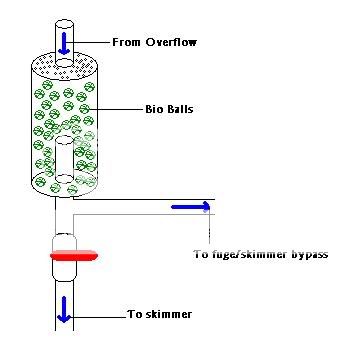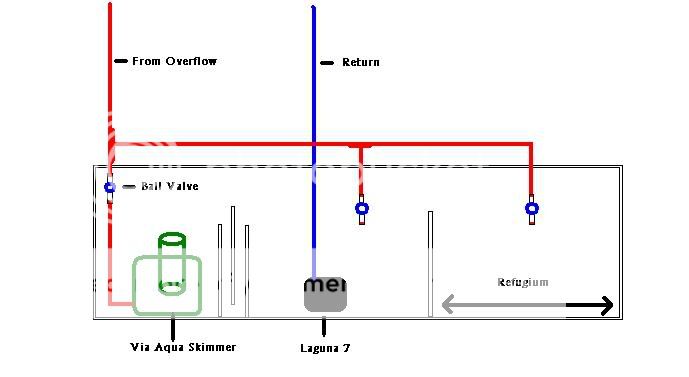- Joined
- Jul 10, 2005
- Messages
- 332
Hey guys, thought I might run my plumbing plans past you - I just thought about incorporating the bioball tower and what do you think? (The tower fits into the second diagram.)


This way my skimmer is gravity fed - I can adjust the flow with a ball valve, and I can control the flow to the fuge and if there is too much or I need to clean the skimmer I can let flow run out the middle tap. The will also be a ball valve coming from the tank - so I can disconnect the plumbing - (forgot to draw it in)
Whats the deal with a pre filter - and how could I put it into this system? Do you have any suggestions? At the moment I'm gonna have to rig up a bigger pump than the one on my skimmer - so I can sort the venturi to run whilst being gravity fed.
I'll follow that link and try and sort out how many bio balls I need, which will dictate the size of the tower. From the looks of it I'll probably go with around 3 - 5 L.
I'm completely in planning at the moment - so no rush.


This way my skimmer is gravity fed - I can adjust the flow with a ball valve, and I can control the flow to the fuge and if there is too much or I need to clean the skimmer I can let flow run out the middle tap. The will also be a ball valve coming from the tank - so I can disconnect the plumbing - (forgot to draw it in)
Whats the deal with a pre filter - and how could I put it into this system? Do you have any suggestions? At the moment I'm gonna have to rig up a bigger pump than the one on my skimmer - so I can sort the venturi to run whilst being gravity fed.
I'll follow that link and try and sort out how many bio balls I need, which will dictate the size of the tower. From the looks of it I'll probably go with around 3 - 5 L.
I'm completely in planning at the moment - so no rush.

